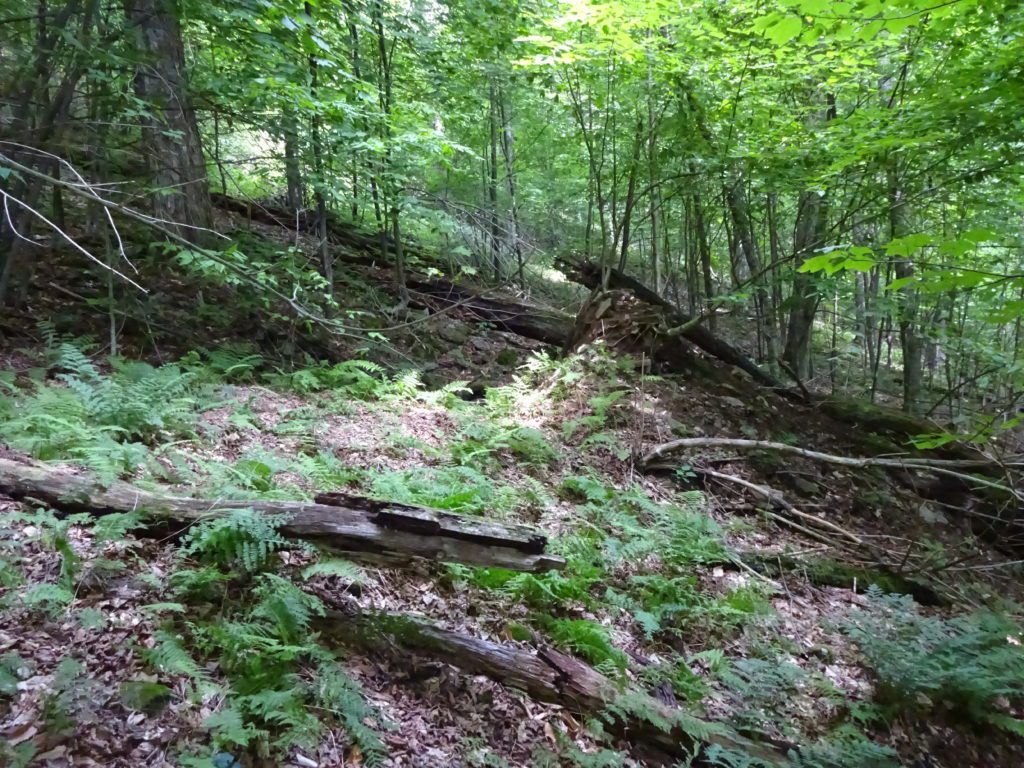WHAT’S GOING ON IN THE FOREST?
One cool thing to see in the woods are “pit and mound” topography. The “pit” is formed when a tree is uprooted and usually blown over by wind creating a depression where the tree’s root-ball once existed. Over time, the upturned root-ball becomes a “mound.” This mound becomes a great growing site for other trees to grow upon. Yellow birch is one tree that often colonizes these mounds. In fact, yellow birch can even grow on the downed log, which as it decays and rots away, leaves a stilted yellow birch tree behind. Eastern hemlocks will also grow on downed logs and after the original tree has rotted away, leave a straight line of trees behind, that appear to be planted by humans. In older forests where downed trees are long gone, the “pit and mound” is more subtle. However, according to Professor & Forest Ecologist–Tom Wessels–these features can be used to decipher what occurred hundreds of years ago. By knowing the direction the trees fell, we can trace back the direction the winds came from and know whether it was a nor’ easter, thunderstorm (normally from the west), or hurricane (from the south).


Ryan Trapani
Director of Forest Services
Catskill Forest Association
